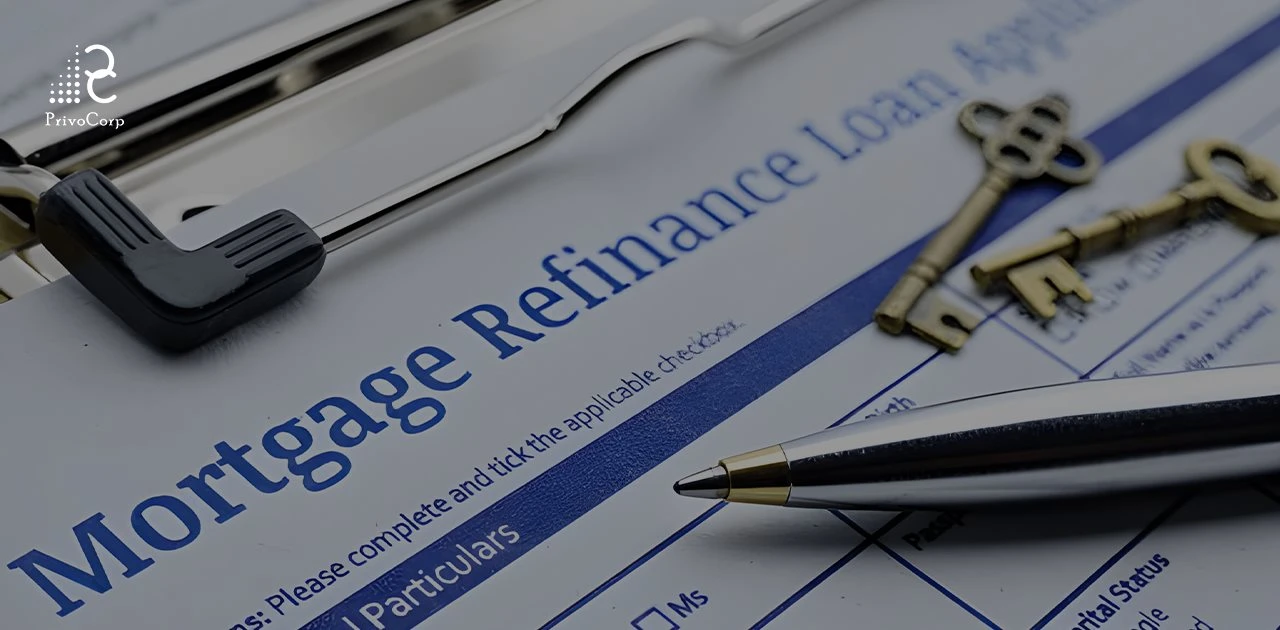In today’s dynamic financial landscape, homeowners are constantly seeking ways to optimize their mortgage arrangements and potentially save money. One powerful tool at their disposal is mortgage refinancing, a strategy that can prove particularly valuable in a fluctuating interest rate environment. This article delves into the intricacies of mortgage refinancing, exploring its potential benefits, risks, and considerations in the context of shifting economic conditions.
Understanding the Rate Environment Impact
The interest rate environment plays a crucial role in determining the attractiveness and feasibility of mortgage refinancing. When interest rates fall, homeowners may find themselves in a position to potentially lower their monthly payments or reduce the overall cost of their loan by refinancing. Conversely, in a rising rate environment, the opportunities for beneficial refinancing may become more limited.
To fully grasp the impact of the rate environment on mortgage refinancing decisions, it’s essential to understand how interest rates are determined. The Federal Reserve’s monetary policy, inflation expectations, and overall economic conditions all contribute to the prevailing interest rate landscape. These factors can influence both short-term and long-term rates, affecting the terms available for new mortgages and refinancing options.
In recent years, we’ve witnessed periods of historically low interest rates, which have spurred a surge in mortgage refinancing activity. Many homeowners have taken advantage of these favorable conditions to secure lower rates, potentially saving thousands of dollars over the life of their loans. However, as economic conditions evolve and inflationary pressures mount, we may be entering a period of rising rates, which could significantly alter the refinancing landscape.
Exploring Refinancing Strategies
When considering mortgage refinancing, homeowners have several strategies at their disposal, each tailored to different financial goals and circumstances. Let’s explore some of the most common approaches:
- Rate-and-Term Refinancing: This is the most straightforward form of mortgage refinancing, where the primary goal is to secure a lower interest rate or modify the loan term. By reducing the interest rate, homeowners can potentially lower their monthly payments and save on interest over the life of the loan. Alternatively, some may opt to shorten the loan term, which can result in higher monthly payments but significant long-term savings in interest.
- Cash-Out Refinancing: In this strategy, homeowners refinance for an amount greater than their current mortgage balance, taking the difference in cash. This can be an attractive option for those looking to tap into their home equity for major expenses, debt consolidation, or investments. However, it’s important to carefully consider the implications of increasing the loan balance and potentially extending the repayment period.
- Streamline Refinancing: Offered by government-backed mortgage programs such as FHA and VA loans, streamline refinancing allows for a simplified approval process with reduced documentation requirements. This can be an efficient option for homeowners with these types of loans who are looking to take advantage of lower rates without the need for a full underwriting process.
Adjustable-Rate to Fixed-Rate Conversion:
Homeowners with adjustable-rate mortgages (ARMs) may choose to refinance into a fixed-rate mortgage to lock in a stable interest rate and protect against potential future rate increases. This strategy can provide peace of mind and more predictable monthly payments over the long term.
When evaluating these strategies, it’s crucial to consider not only the potential benefits but also the associated costs and risks. Mortgage refinancing typically involves closing costs, which can include appraisal fees, title insurance, and origination fees. These expenses can significantly impact the overall financial benefit of refinancing and should be carefully factored into the decision-making process.
Conducting a Break-Even Analysis
One of the most critical steps in determining whether mortgage refinancing makes financial sense is performing a break-even analysis. This calculation helps homeowners understand how long it will take for the potential savings from refinancing to offset the costs associated with the process.
To conduct a break-even analysis, follow these steps:
- Calculate the total closing costs associated with the refinance.
- Determine the monthly savings by comparing the new payment to the current payment.
- Divide the total closing costs by the monthly savings to find the number of months it will take to break even.
For example, if the closing costs for a refinance are $5,000 and the monthly savings are $100, the break-even point would be 50 months (5,000 / 100 = 50). This means it would take just over four years for the refinance to become financially beneficial.
When interpreting the results of a break-even analysis, consider your long-term plans for the property. If you intend to sell or move before reaching the break-even point, refinancing may not be the most prudent financial decision. However, if you plan to stay in the home well beyond the break-even point, the potential long-term savings could be substantial.
Navigating Market Timing Considerations
Timing the market perfectly for mortgage refinancing can be challenging, if not impossible. However, being aware of market trends and economic indicators can help homeowners make more informed decisions about when to refinance.
Some key factors to consider when evaluating market timing include:
- Interest Rate Forecasts: While no one can predict future rates with certainty, paying attention to economic forecasts and expert opinions can provide insight into potential rate movements.
- Personal Financial Situation: Your individual circumstances, such as credit score improvements or changes in income, can affect your eligibility for better rates regardless of broader market conditions.
- Housing Market Trends: The value of your home plays a role in refinancing options, particularly for cash-out refinances. Understanding local real estate market trends can help inform your decision.
- Economic Indicators: Keeping an eye on inflation rates, unemployment figures, and GDP growth can provide context for potential interest rate movements.
While it’s tempting to try to time the market perfectly, it’s often more practical to focus on your individual financial goals and circumstances. If refinancing aligns with your long-term financial objectives and offers clear benefits, it may be worth pursuing even if rates aren’t at their absolute lowest.
Integrating Refinancing into Long-Term Financial Planning
Mortgage refinancing should not be viewed in isolation but rather as part of a comprehensive long-term financial plan. When considering refinancing options, it’s important to evaluate how they align with your broader financial goals, such as retirement planning, college savings, or investment strategies.
For instance, the decision to refinance to a shorter loan term with higher monthly payments should be weighed against other financial priorities. While paying off your mortgage faster can lead to significant interest savings, it may come at the expense of other important financial objectives, such as maximizing retirement contributions or building an emergency fund.
Similarly, a cash-out refinance used for debt consolidation or home improvements should be carefully evaluated in the context of your overall financial health. While it may provide short-term relief or enable valuable home upgrades, increasing your mortgage debt could impact your long-term financial flexibility.
Working with a financial advisor can be beneficial in assessing how mortgage refinancing fits into your broader financial picture. They can help you model different scenarios and understand the long-term implications of various refinancing strategies on your overall financial health.
Adapting to Regulatory Changes
The mortgage industry is subject to ongoing regulatory changes that can impact refinancing options and processes. Staying informed about these changes is crucial for homeowners considering refinancing.
Recent years have seen several significant regulatory shifts in the mortgage servicing industry, aimed at protecting consumers and ensuring responsible lending practices. These changes have affected various aspects of the mortgage process, including:
- Disclosure Requirements: Enhanced disclosure rules have been implemented to provide borrowers with clearer, more comprehensive information about loan terms and costs.
- Qualifying Standards: Stricter qualifying standards have been introduced to ensure borrowers have the ability to repay their loans, potentially impacting refinancing eligibility for some homeowners.
- Appraisal Processes: Changes to appraisal requirements and processes can affect the refinancing timeline and costs.
- Servicing Standards: New regulations have been implemented to improve mortgage servicing practices, potentially affecting how refinanced loans are managed.
Navigating these regulatory changes can be complex, and working with experienced mortgage professionals can help ensure compliance and maximize the benefits of refinancing. Mortgage servicing companies and mortgage default services providers play a crucial role in helping homeowners understand and adapt to these evolving regulations.
Conclusion
Mortgage refinancing remains a powerful tool for homeowners looking to optimize their mortgage arrangements and potentially save money. In a changing rate environment, understanding the nuances of refinancing strategies, conducting thorough break-even analyses, and considering market timing factors are crucial steps in making informed decisions.
By integrating refinancing considerations into long-term financial planning and staying abreast of regulatory changes, homeowners can leverage mortgage refinancing to support their broader financial goals. Whether you’re looking to lower monthly payments, tap into home equity, or adjust your loan terms, a well-executed refinancing strategy can provide significant financial benefits.
As with any major financial decision, it’s advisable to consult with mortgage professionals, financial advisors, and legal experts to ensure that your refinancing decisions align with your individual circumstances and objectives. By taking a comprehensive, informed approach to mortgage refinancing, homeowners can navigate the complexities of a changing rate environment and work towards a more secure financial future.








